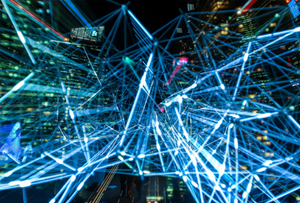![]() 5 minute read
5 minute read
Telepresence market is growing dramatically and expected to reach $503 million by 2021. The solution makes therapies more interactive and helps detached people feel like a part of society. Using technologies for remote communication and socialization changes behavior culture and restructures the global marketplace. The future with telepresence is digital and more eco-friendly, but will it actually resolve loneliness issue?
Robo-therapists
come over to help
Autism prevalence remains high across the world. In fact, 1 out of 160 children was diagnosed with autism globally in 2017. According to WHO, autism can become a barrier preventing people from socialization and doom some children to life-long care and loneliness. With constantly high demands and proven interest in telepresence, various hi-tech solutions become an essential part of the therapeutic industry and expand treatment capabilities. Pizztech, a Finnish non-profit company, focused on applying the robot in the interactive speech therapy for kids with autism. Momo is operated by a doctor. Thus the robot appears to knows Finnish and sign language, and is able to perform commands and movements. The major problem with therapies is their boring nature, and children usually do not show high enthusiasm during the lessons. In the cases like Momo, telepresence robots play a role of the intermediary between children and adult world and help find common ground for communication. As children are not distracted by human features like facial expressions, smell, and other distractions, they can concentrate on developing communication skills. This way, telepresence becomes a pathway for better social connectedness avoiding social isolation and making at least one robo-friend. This futuristic trend breaks the social ice and weakens stigmas for people with special conditions. The new understanding of connectivity and integrity is here.
Homebound
digital classroom
Today, in the UK solely, 4.3% of students have to opt to homeschool due to special needs. Apart from that, the governmental support creates a favorable ground for the rising popularity of home-education in general. By 2020, the number of homeschooling students expected to reach 2.3 million in the US solely. Social isolation remains one of the major problems in all home-educational cases. Telepresence builds a digital bridge between student and classroom and brings inclusive education to the next level. “People always talk about robots taking over and replacing us, but you can actually use them to improve the human condition, especially, that of homebound children”, states Veronica Newhart, a Ph.D. candidate of UC Irvine’s School of Education. Now, AV1 robot, the invention of No Isolation project, sits in the classroom transmitting live stream video to a student at home. With No Isolation, any homebound student can participate in classroom discussion and no longer be isolated in a room or hospital ward. The telepresence education trend is more of inclusivity promotion, but it can escalate quickly and lead to fully digitized classrooms full of robots.
“What happens to humans when they’re disconnected? They get depressed,” says Veronica Newhart, Ph.D. candidate in UCI’s School of Education. “This use of technology as a way to include children who are otherwise isolated fascinates me. Most importantly, we need to update the educational services provided to homebound children. We’re using the same system that’s been in place for more than 80 years: A tutor makes home visits for four to five hours a week and brings over stacks of paperwork for the child to complete. The tutor is the child’s only connection to the classroom.”
A solution
for lonely elderly
Population aging is another issue occurring globally. For example, Japan vividly experiences the issue. In 2017, the number of people over 90 reached 2 million. Older people often feel left out of the hectic lifestyle. Thus, loneliness in the older age might result in higher incidents of death and injuries. Statistics show that people in institutions are recorded with less lethal cases due to injuries and lack of attention. To improve the living conditions of the elderly, the Japanese government plans to spend $23 million on developing the needs of the aging population. Toyota now also works on developing home assistance robots to help people with disabilities navigate around the house and live by themselves. With telepresence, medical assistance will also be at hand with no physical presence of the medical personnel required. Tech-companies perceive aging and other social trends as promising opportunities for growth. Taking advance of irreversible social changes is a new niche and market opportunity – with these favorable conditions, the telepresence robots market will attain to $237m in 2023 globally.
To the new digital communication culture
Social media already deals with loneliness as a social trend. Thus, it is only an illusion of communication, with telepresence almost real-life communication takes place. On the one hand, it is an opportunity. This diminishes common interaction barriers and has a favorable environmental impact. It will decrease carbon dioxide emissions by 1.99 gigatons in 2050. But, on the other side, telepresence is still far from daily life conversation and is more of an advanced illusion of connectivity. There is room for improvement. The future of telepresence is augmented with a variety of vectors to follow.
Telepresence is projected to alter behavioral habits and restructure the global marketplace. Businesses already save up to 82 billion hours of traveling. This trend could expand to the behavior of a regular user as traveling long-distance will be no longer in high-demand due to a possibility to interact via telepresence. Staycation becomes a novel way to spend “vacation”, support local producers, and reduce contaminating emissions. The major travel industry players, transport and hospitality businesses will struggle with this downswing and lose profits. The global marketplace will come in the transition stage to being fully telepresent. The economy enters the era of digitalized services with combating loneliness as a key innovation trigger.



